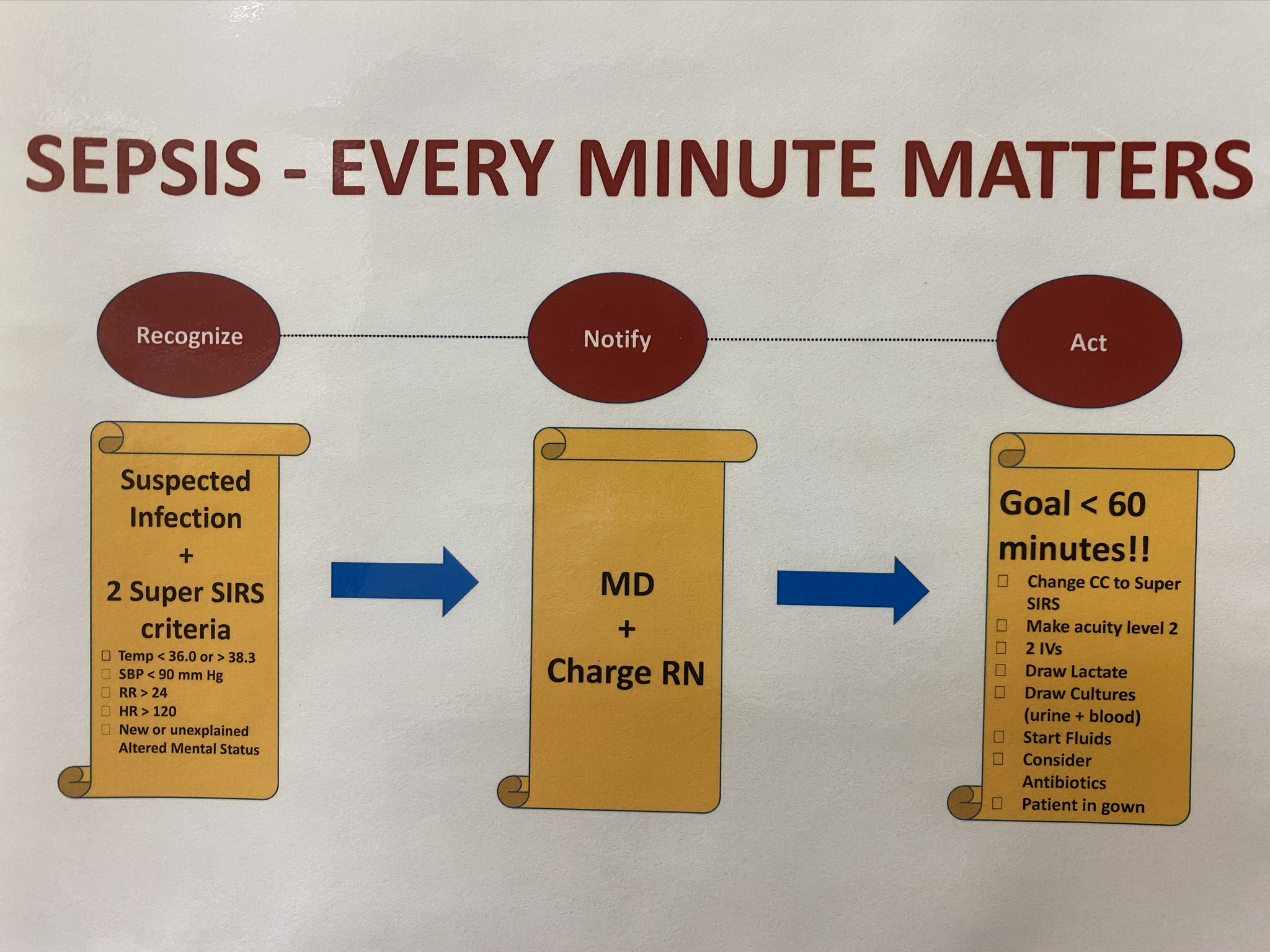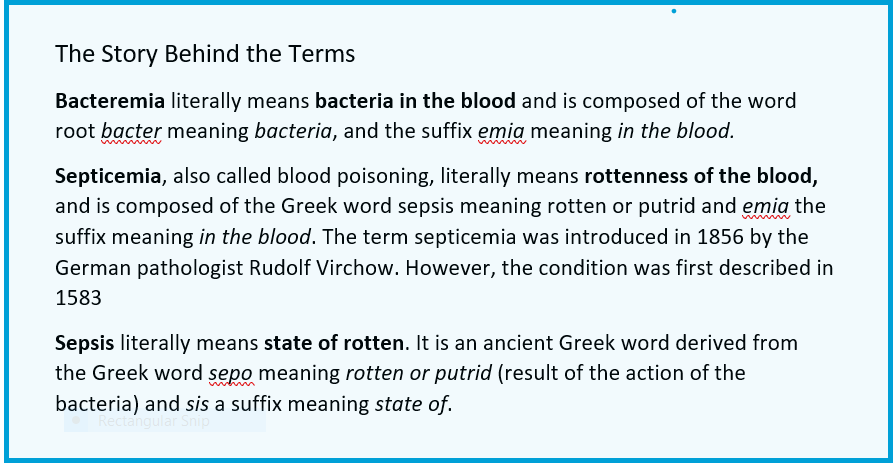Sepsis, Septicemia, and Bacteremia
Recently during an Emergency Department visit with a family member, I noticed this poster on the wall of our assigned patient room. Obviously, this healthcare facility takes sepsis seriously.

Why?
Almost certainly because sepsis is a life-threatening medical emergency and the number of cases per year is on the rise. Without timely treatment, it can rapidly lead to tissue damage, organ failure, and death. Each year 1.7 million adults in America develop this condition and nearly 270,000 die as a result.
Sepsis, septicemia, and bacteremia are all words used to describe this life-threatening infection. They can occur together, or separately. When faced with this condition, either as a healthcare consumer or a medical professional, it is good to be informed about the terminology used to describe it.
How do the Terms Sepsis, Septicemia, and Bacteremia Differ?
Bacteremia is the simple presence of bacteria in the blood. It can result from a serious wound or urinary tract infection, or from something as harmless as brisk toothbrushing. Most often, only a small number of bacteria are present, and they are removed by the body on its own. In such cases, most people have no symptoms. However, occasionally, bacteremia leads to septicemia, sepsis, or both.
Septicemia, also known as blood poisoning, is the presence and multiplication of bacteria in the blood. It occurs when a bacterial infection elsewhere in the body, such as the lungs or urinary tract, enters the bloodstream. This is dangerous because the bacteria and their toxins can be carried through the bloodstream to your entire body. Septicemia is a potentially life-threatening infection. Untreated septicemia can quickly progress to sepsis.
Sepsis is a life-threatening condition that arises when the body’s response to infection injures its own tissue. It is a medical emergency. Without timely treatment, it can rapidly lead to tissue damage, organ failure, and death. Sepsis is not contagious, although infections causing it maybe.

What Should I Know?
You should know the meaning of the terms:
- bacteremia, least serious, and is the simple presence of bacteria in the blood;
- septicemia, more serious and is the presence and multiplication of bacteria in the blood
- sepsis, the most serious (life-threatening) and occurs when the body’s response to infection injures its own tissue
Most sepsis is caused by bacterial infections, but it can be a complication of other infections, including viral infections, such as COVID-19 or influenza. To learn more about the signs and symptoms diagnosis and treatment click here.
Stay safe and well during this time of the pandemic.
Read Other Featured Terms Posts >
Sources
https://microbiologyinfo.com/differences-between-bacteremia-and-septicemia/
https://www.meningitis.org/blogs/difference-sepsis-septicaemia
https://www.webmd.com/a-to-z-guides/sepsis-septicemia-blood-infection#1-1</
https://www.cdc.gov/sepsis/what-is-sepsis.html
https://www.healthline.com/health/septicemia
https://www.nigms.nih.gov/education/fact-sheets/Pages/sepsis.aspx
https://blog.medisolv.com/articles/the-history-of-sepsis







